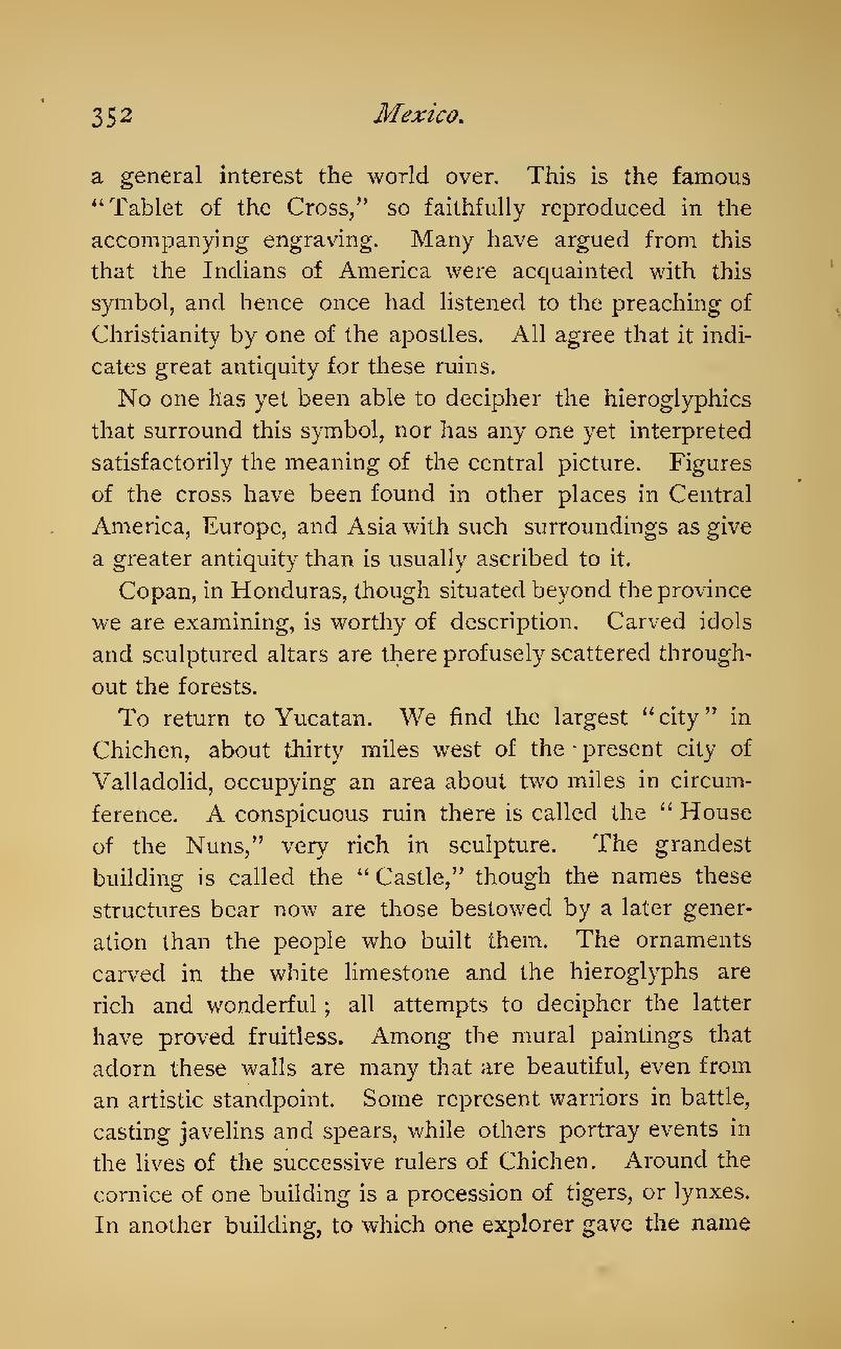a general interest the world over. This is the famous "Tablet of the Cross," so faithfully reproduced in the accompanying engraving. Many have argued from this that the Indians of America were acquainted with this symbol, and hence once had listened to the preaching of Christianity by one of the apostles. All agree that it indicates great antiquity for these ruins.
No one has yet been able to decipher the hieroglyphics that surround this symbol, nor has any one yet interpreted satisfactorily the meaning of the central picture. Figures of the cross have been found in other places in Central America, Europe, and Asia with such surroundings as give a greater antiquity than is usually ascribed to it.
Copan, in Honduras, though situated beyond the province we are examining, is worthy of description. Carved idols and sculptured altars are there profusely scattered throughout the forests.
To return to Yucatan. We find the largest "city" in Chichen, about thirty miles west of the present city of Valladolid, occupying an area about two miles in circumference. A conspicuous ruin there is called the "House of the Nuns," very rich in sculpture. The grandest building is called the "Castle," though the names these structures bear now are those bestowed by a later generation than the people who built them. The ornaments carved in the white limestone and the hieroglyphs are rich and wonderful; all attempts to decipher the latter have proved fruitless. Among the mural paintings that adorn these walls are many that are beautiful, even from an artistic standpoint. Some represent warriors in battle, casting javelins and spears, while others portray events in the lives of the successive rulers of Chichen. Around the cornice of one building is a procession of tigers, or lynxes. In another building, to which one explorer gave the name
